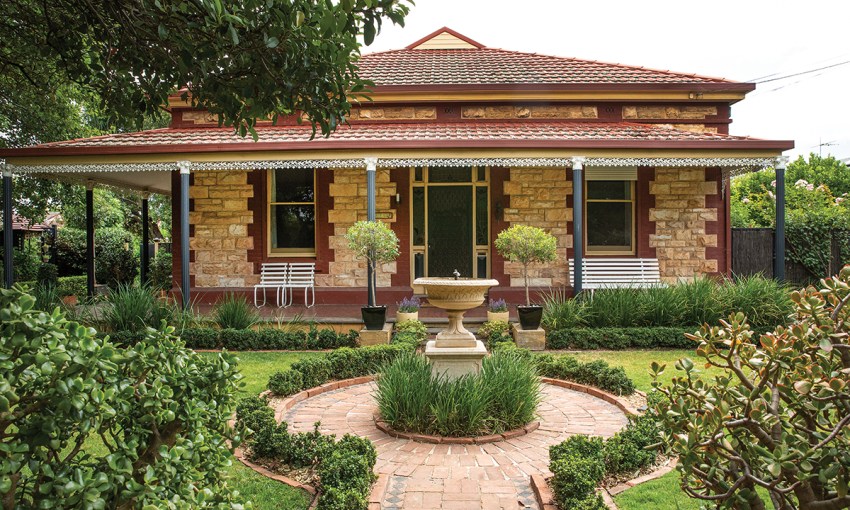The owners of this suburban sanctuary in Adelaide’s west have connected with a sense of community, history and wellbeing – all through the power of gardening.
Open Garden: The butterfly effect
Back when the old coal-fired locomotives used to roar through the western suburbs between Port Adelaide and the city, southerly winds would sometimes fan sparks into the trees lining one side of the track, setting them alight and bringing residents bolting out of their homes with buckets of water to douse the blaze.
As husband-and-wife Daniel Cooper and Cheryl Andrews-Cooper recount this piece of local folklore, a modern train briefly interrupts the peace as it rumbles along the rail corridor directly adjacent their front garden at West Croydon.
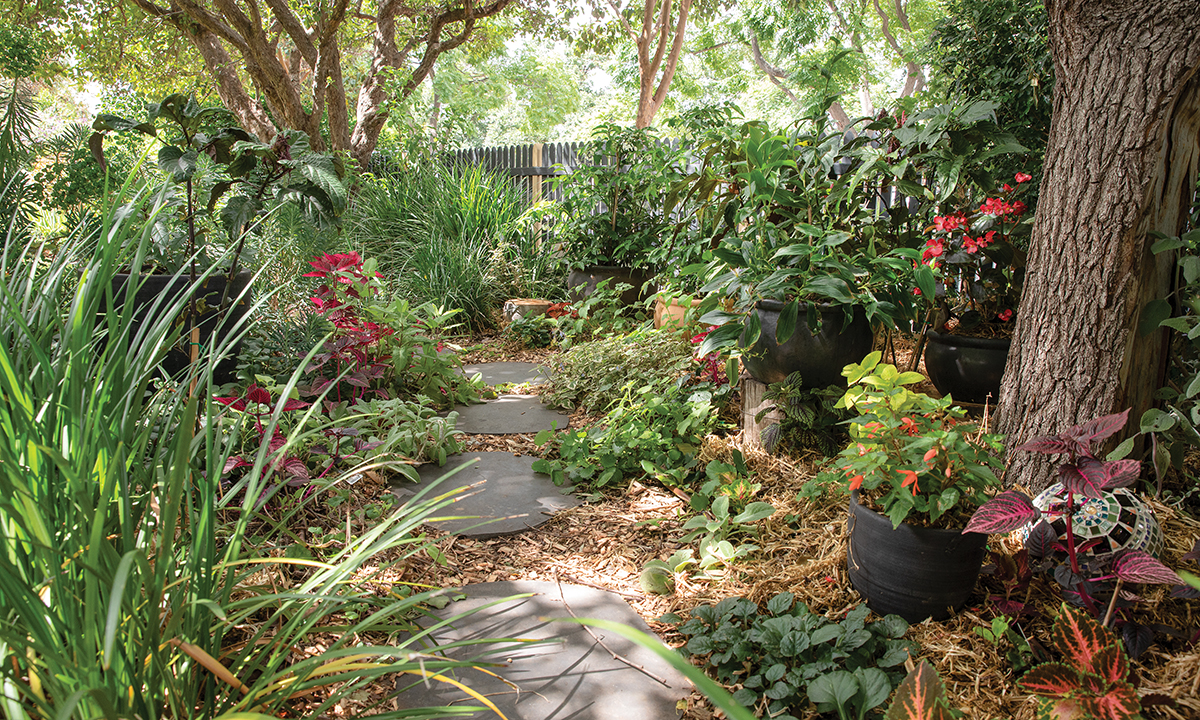
Both originally from Victoria, Cheryl is a social worker and Daniel is a former ABC journalist and TV producer, who now works in video production. Since purchasing their home at West Croydon almost 20 years ago, it has been through the neighbourhood gardening community that they’ve found a rewarding sense of place and connection with local history.
Two years ago, Daniel and Cheryl were part of a community project to make a 250-metre-long “Bee and Butterfly Corridor”. Created with their community group, Rosetta Street Greening, with the support of SA Water and the City of Charles Sturt, it covers the railway directly across the road from their house; supposedly the same stretch that would’ve once been set alight by the old trains.
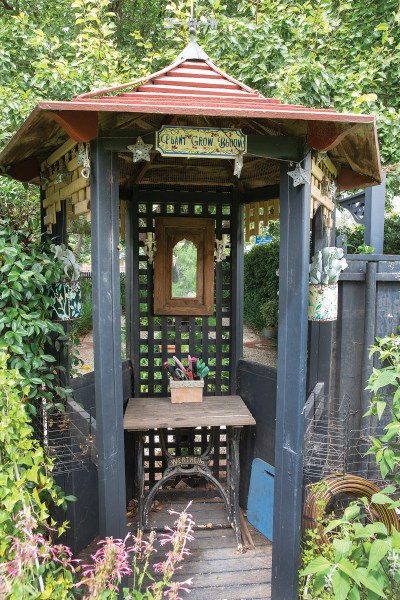
Enjoyed by local primary school students, passing cyclists and walkers, the corridor is a thriving ecosystem of goodenias, acacias, lavenders and salvias, mostly propagated from local gardens and planted specifically for native bees and butterflies.
When Daniel and Cheryl purchased their home in 2002, the garden was barren except for a few trees, couch grass and a thick expanse of concrete, while the home’s interior was a “symphony of linoleum” and had been stripped of any of its original character features. Henry Martin, a Boer War Captain, and his wife Sarah built the sandstone villa in 1904 and named it Churston after an English village.
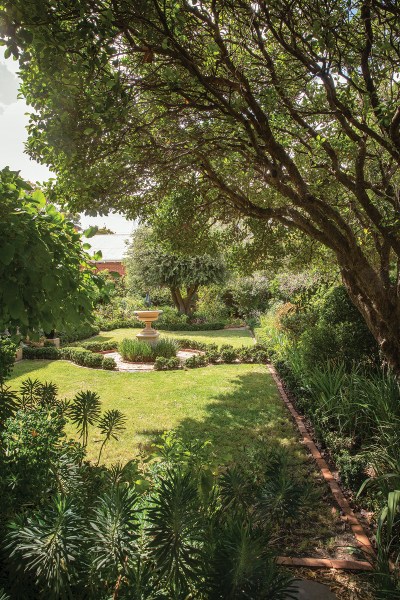
“We pretty much had to rehabilitate the whole garden and the first thing we did was plant the big Manchurian pears out the front because the afternoon sun was just beating on the house in summer,” says Cheryl. “I come from a family where you just have a nice garden. My mum, my aunties and my grandmother were all gardeners, so to me it just seemed odd not to have a garden.”
Over two decades, the couple transformed the neglected property into a structured garden with a pleasant arrangement of “rooms” with surprises around every corner; sculptures, mosaics, water features and clever plantings. Daniel concedes that along the way there have been a number of failures in their plant selection, and the garden has had to evolve as the shade increased.
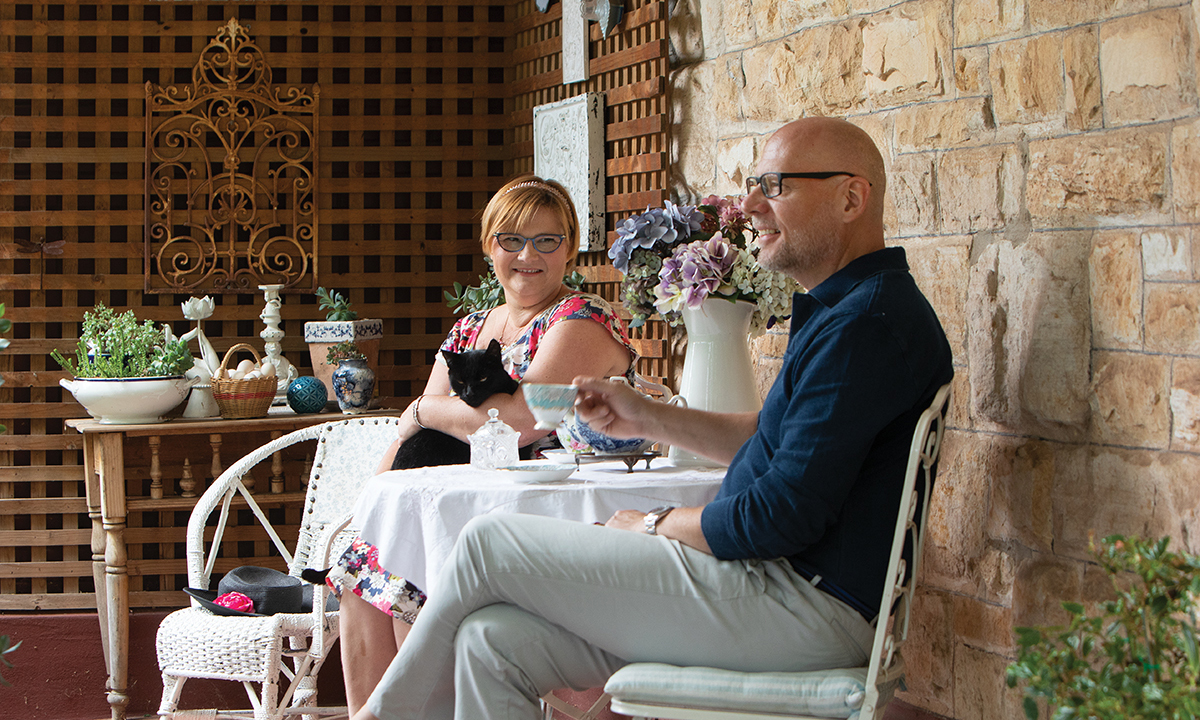
“When we moved in, it would have been nice if somebody had been there with a fact sheet to tell us about what would grow in our area,” Daniel laughs. “It’s taken us a while to get to grips with what grows here.”
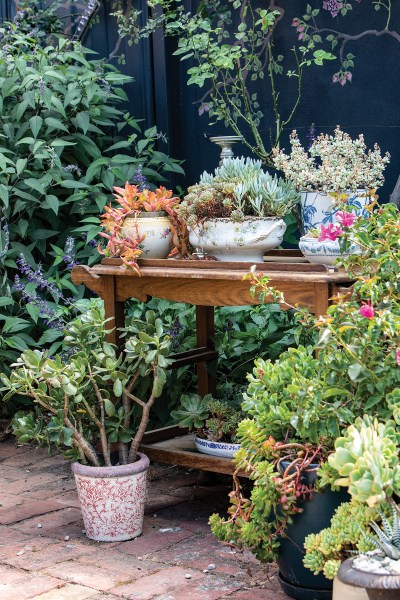
Word got out about the garden and the couple is now preparing to host a second SA Open Garden weekend. They relish the opportunity to share their experience with younger families or those new to the area who are looking to develop their own gardens.
The front yard is the largest section of the property, structured with euonymus “Tom Thumb” hedging after a failed attempt to grow English box, which is better suited to the Hills. Then, gardens to either side of the house each have their own theme; one being a shady “woodland walk” and the other an eclectic sunny garden of roses and fruit trees. The rear of the house features a productive garden with a home-made wicking veggie patch and fruit trees espaliered to capitalise on space.
The entire garden has been created on a modest budget. The woodland-style path was once a giant slab of thick concrete that Daniel himself demolished, keeping key slate-like pieces to create a path surrounded by pebbles.
Yet with of all the garden’s features, nothing grabs attention like the sighting of a native blue banded bee. The bees venture across from the plantings in the Bee and Butterfly Corridor, to sample similar varieties Daniel and Cheryl have planted, such as buddleia.
“We have quite a few native bees visit our garden, which I think is because of our bee garden across the road. Everyone gets very excited when they see a blue banded bee up close – the bees love the salvias and they’re so pretty; they look quite a bit like a honeybee, but they have blue bands and move in a different way,” Cheryl says.
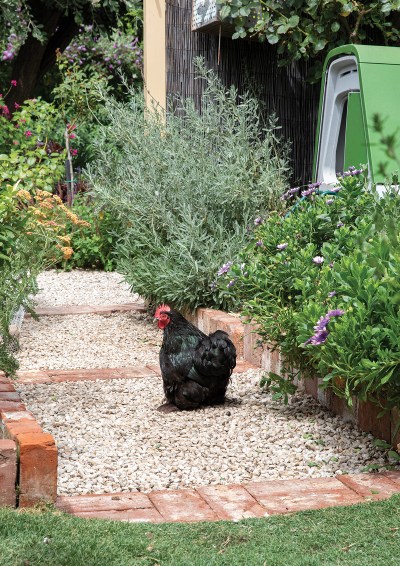
“Before it gets hot in the mornings, I come out here into our garden and there are butterflies everywhere, all different sorts; it’s really magical. They love the buddleia; there’s a reason they call it the butterfly bush.”
While the couple’s efforts have been of value to the community, the garden itself has been of greatest benefit for Cheryl. “I battled the dreaded breast cancer and went through 12 months of hell, so I spent the majority of that time at home. Just being able to get out in the garden was amazing. When I did have the energy, I could actually get outside and potter about,” she says.
“I found the garden fantastic for my recovery, and it has created quite a lot of solace for us during COVID-19. We created special spaces for our family. The fact that people want to come have a look and we can share it with them is very humbling.”
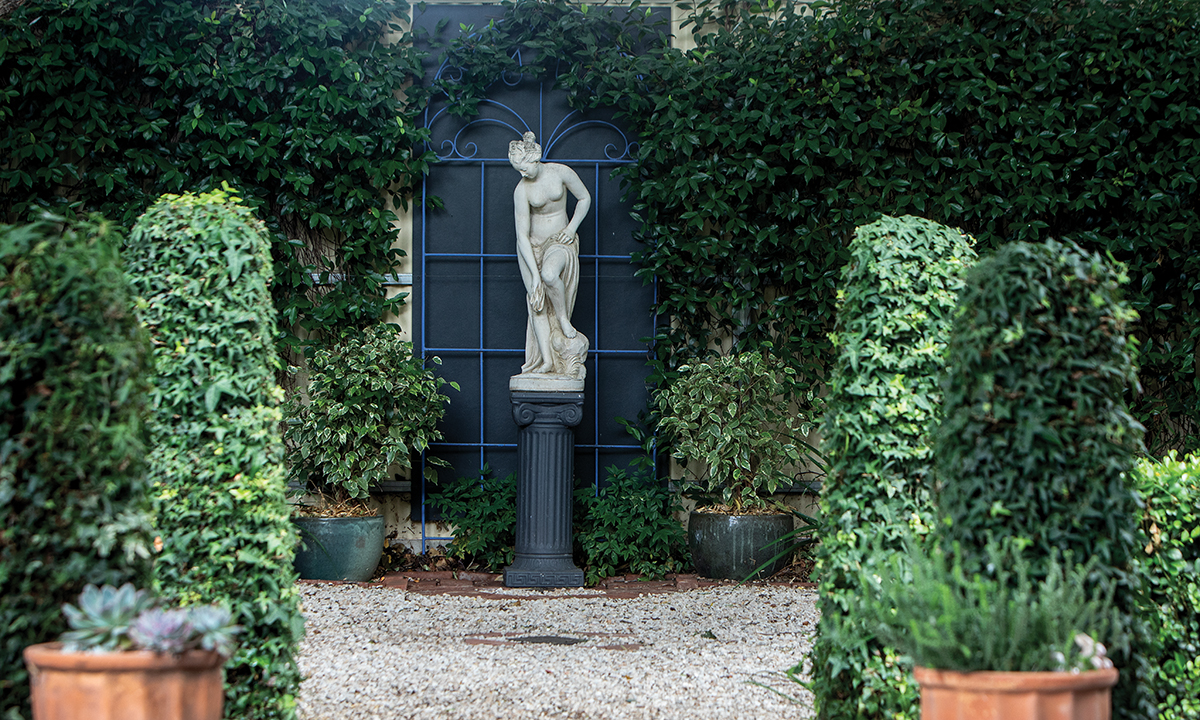
Churston Garden will be open to the public on March 27 and 28, 2021, as part of Open Gardens South Australia opengardensa.org.au
This story first appeared in the March 2021 issue of SALIFE magazine.



